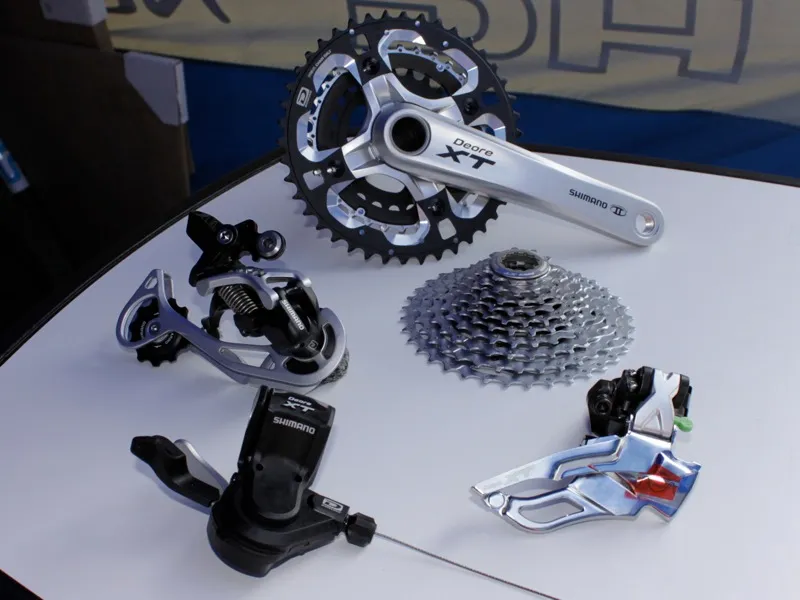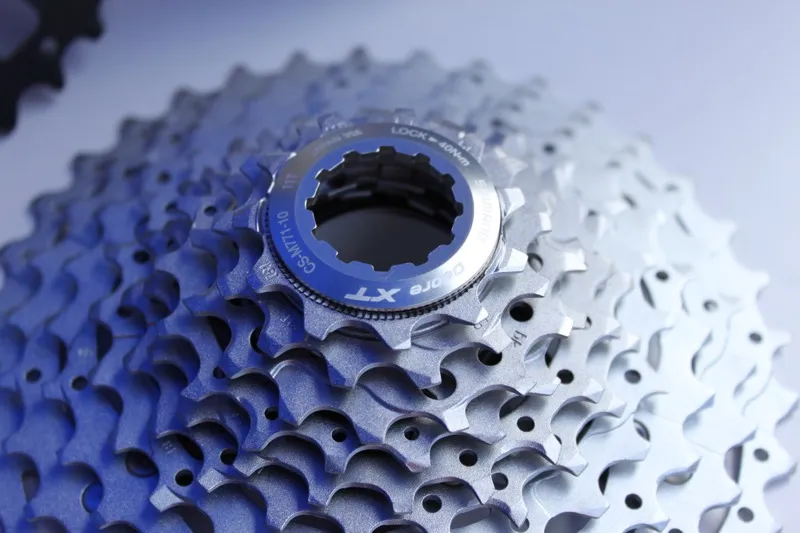The setting for BikeRadar’s first ride on Shimano’s new 10-speed (or should we say 30-speed?) Dyna-Sys XT groupset could not have been more favourable, which made it easy to come away with a good opinion of the new parts.
We'll bring you a full review once we've done some proper testing, but here are out first impressions based on an initial three-hour ride.
We’ll paint the picture for you: the place, the mountains surrounding Santa Cruz, California; the bike, Ibis’s new Mojo HD; the suspension, Fox’s 2011 36 RLC and RP23; tyres, WTB Mutanos.
The dirt benefited from night-time rain and the tyres perfectly matched the soil conditions. The Mojo HD weighed somewhere around 26lb and its 160mm of front and rear travel inspired confidence on the swoopy trails, which were just technical enough to inspire fast riding but not quite tough enough to really scare anyone.

BikeRadar's XT Dyna-Sys equipped test rig – not too shabby
The new Shimano XT and SLX Dyna-Sys parts don’t represent all new ‘groups’; instead, Shimano consider Dyna-Sys a drivetrain improvement. It's meant to fit in with their current brakes, hubs, wheels, crankarms and even left-hand shifter.
“It integrates right in,” said Devin Walton, Shimano’s PR manager. “The most obvious improvement with Dyna-Sys is the 10-speed rear end, but Dyna-Sys is no more about 10-speed than Dura-Ace Di2 is about being electronic.
"Meaning, [with Di2] our goal was to make the absolute best competitive road equipment that we could possibly make and it turns out, to get there, electronics were the path. With Dyna-Sys the goal was to create the most efficient mountain bike drivetrain that offers the most practical gearing to users for the majority of the riding that they do, and it turns out that the 10-speed rear end was on that path to achieve that.”
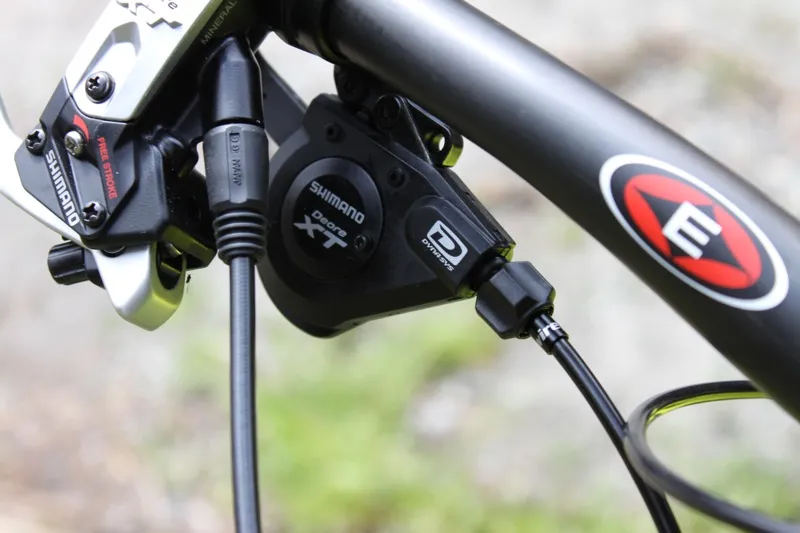
Besides offering 10 speeds, the rear Dyna-Sys shifter offers improved lever feel
Time to climb
During the initial parking lot setup there were more than a few test riders bent over counting sprockets on the rear wheels of their bikes. A brief spin on the new gear offered two insights: the rear shifter is much tighter, especially with respect to the cable pull thumb paddle, and the rear derailleur is much more robust, which offers a snappy shifting feel and much less chain slap and drivetrain noise.
When posed with the question of whether to shuttle or ride up, especially given the equipment at hand, we had to go with the latter. If nothing else, it builds character. The ride plan would go something like this: climb for an hour, descend for an hour, then climb another hour back for a lunch provided by Western Spirits Cycling Tours.
We left the lot in the big ring and ended up riding in it much more than usual. Shimano took the size down to 42 teeth for the Dyna-Sys concept which, paired with the 36-tooth sprocket out back, gives a much more useful range. We offer a thumbs up for these two improvements as they make the big and middle rings much more usable and the small ring all but obsolete. This brings up our first nitpick: why not just make it a two-ring drivetrain like SRAM?
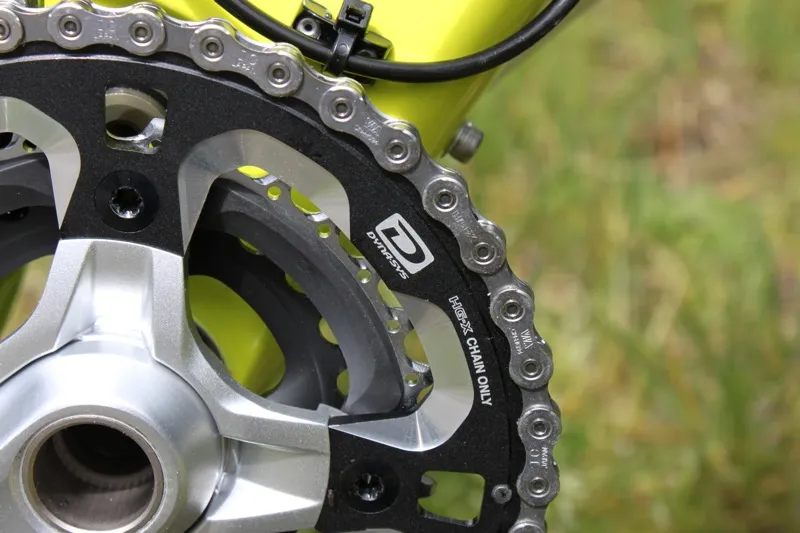
While the crank arms are the same, the XT Dyna-Sys chainrings are new
“A double is really only something that we’ll talk about once we get into XTR,” said Walton. “The reason for that is that our goal [with XT and SLX] is to increase drivetrain efficiency for the vast majority of riders, and the vast majority of riders aren't necessarily two chainring riders.
"There are a lot of enthusiasts who can do it, but as far as typical mountain bike riders who buy the vast majority of bikes that are sold ... Let me put it this way, when I started in customer service for Shimano in the early ’90s we didn’t make a Dura-Ace triple crank. Every fifth call I took was from some guy who wanted Dura-Ace but couldn’t ride it because he couldn’t pedal a double. He needed a triple to get up the hills.”
This is where we beg to differ with Shimano and happily align with SRAM for this particular product. For context, SRAM’s 28-36-tooth low gear (using their 28/42-tooth chainring combo for comparison) offers 20.2 gear inches, or 2.4mph of speed at 40rpm. That’s a pretty low gear that should get almost anyone on a 26in wheeled bike up a darn steep hill.
An average walking speed is around 3mph. Shimano’s 24-36-tooth low gear equates to 17.3 gear inches or 2.1mph at 40rpm – maybe too low to be all that usable. It's also only 0.3mph slower than SRAM's bottom gear equivalent. Double the rpm to 80 and it's 4.2mph with Shimano to 4.8mph with SRAM.
Mind you, a 22-34-tooth low gear offers 16.8 gear inches, so using that information for comparison, you should be able to estimate how important it is to have a triple versus a double. For further reference, check out the late Sheldon Brown’s Gear Calculator.
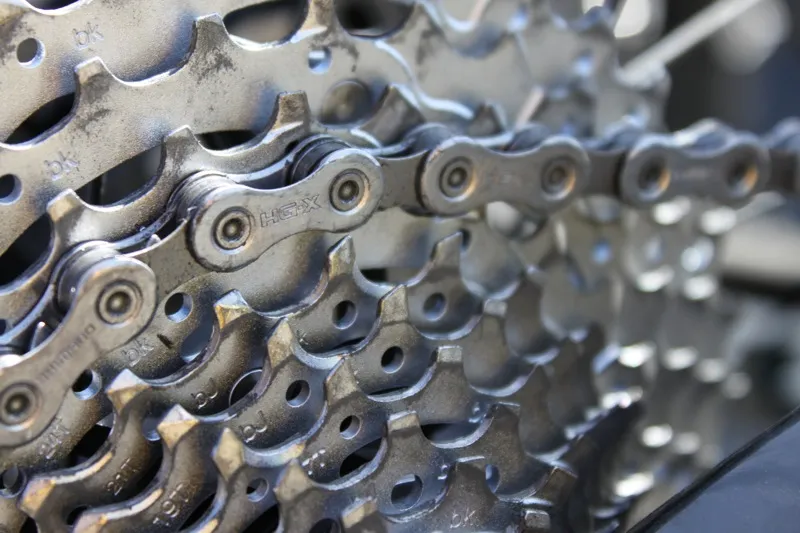
The new sprocket profiles help provide Shimano's best rear shift performance to date
Keep in mind that while the tighter front chainring ratios associated with Dyna-Sys do equate to better front shifting quality, the three-chainring system is still more susceptible to chain suck and misalignment than a double, though we had no such troubles during our first ride on the new drivetrain. The three rings degrade chainline, when compared to a double, and influence the quality of crossover gear use, which Shimano encourage with Dyna-Sys.
This was shown by our short experience with Dyna-Sys: when completely crossed over – in the 42/36 combination – all it takes is roughly three-quarters of a back pedal to knock the chain down a sprocket, which is not always the case with a double system. Bottom line, we still think two chainrings are better than three [when paired with a 10-speed cassette] for almost all mountain bikers, racers or not.
During the whole of our first ride, which encompassed almost two hours of climbing, we never used the 24-tooth chainring and only once did we need a gear lower than the 32/36-tooth combo, and in that case we missed the shift. The miss was due to fault of our own planning rather than the performance of Dyna-Sys. However, a double’s 28-tooth small chainring would have allowed for easier rear panic shifting, versus the front shift we needed to make with Dyna-Sys.
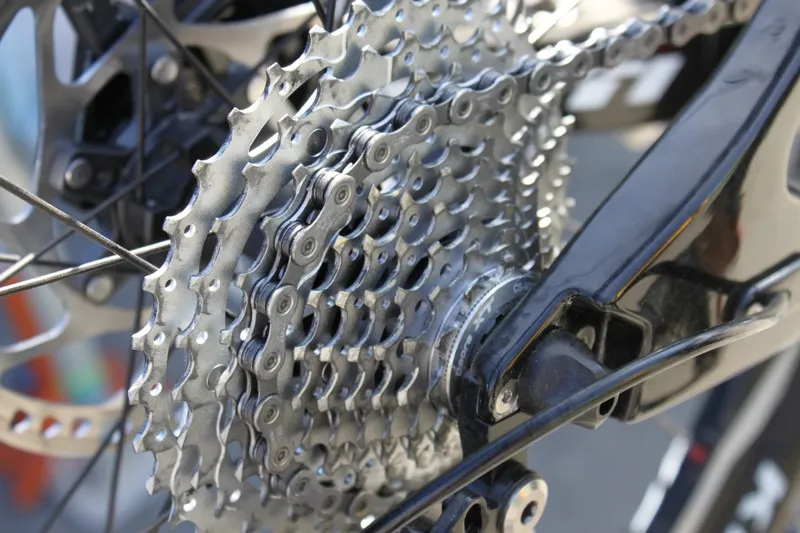
The chain's inner plates facilitate rear shifting while the outer plates aid in chainring pickup
Game on: Downhill
Two things really stick out as benefits once the trail turns down. First off, we never missed the 44-tooth big ring. The smaller 42, when paired with the wider range of the 11-36-tooth cassette, allowed us to stay in the big ring through most of the trail undulations and punchy climbs encountered on our mostly downhill route.
The biggest improvement, however, seems to be the improved chain control of the system, which we credit to a stiffer derailleur pulley cage spring and the general use of gear combinations that offer more chain wrap. We found no issues with Dyna-Sys when descending other than the fact that a double has the potential to offer a better chainline.
Bottom line
Everything Shimano are preaching about the technical advantages of Dyna-Sys proved true during our first experience with their new drivetrain. There's less recovery shifting due to tighter front and wider rear gear ratios, better shifts due to internal shifter improvements and the completely new made-for-mountain bike, asymmetrical 10-speed chain, and better chain control thanks to more chain wrap, more of the time and a stiffer derailleur pulley cage spring.
The bottom line is that Shimano seem to have made some major improvements to the performance of their XT and SLX drivetrains, though time and more test riding will be the true indicator. The question we want to leave you with is: Do you think Shimano’s improvements only go halfway? We believe a 2x10 drivetrain would have represented the full monty.

Our Ibis Mojo HD was outfitted with the full XT Dyna-Sys drivetrain
